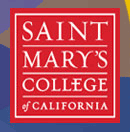Article Title
In Our Time: Advancing Interfaith Studies Curricula at Catholic Colleges and Universities
Abstract
People who orient around religion differently are interacting with greater frequency than ever before. These interactions, especially in the context of college and university campuses, require young people to grapple with their own identities in ways that previous generations could more easily avoid. Conversations about religious diversity have become elevated at colleges and universities, which has led Drs. Douglas Jacobsen and Rhonda Hustedt Jacobsen to claim that religion is “no longer invisible” in the context of American higher education.
As an organization that works with hundreds of American colleges and universities every year, Interfaith Youth Core (IFYC) believes that Catholic institutions are not only well-equipped to engage in interfaith conversation, but already are on the vanguard of this work. Interfaith efforts are particularly salient within Catholic Higher Education curriculum, where Interfaith and Interreligious Studies courses and programs are being established. As these exciting academic programs continue to take shape across the country, we recommend that scholars and educators continue to consider professional applicability, attention to intersectionality, and assessment as three important practices to adopt in their Interfaith and Interreligious Studies programs.
Recommended Citation
Patel, Eboo; Silverman, Noah; and Del Vecchio, Kristi
(2017)
"In Our Time: Advancing Interfaith Studies Curricula at Catholic Colleges and Universities,"
Engaging Pedagogies in Catholic Higher Education (EPiCHE):
Vol. 3:
Iss.
1, Article 1.
DOI: https://doi.org/10.18263/2379-920X.1023
Available at:
https://digitalcommons.stmarys-ca.edu/epiche/vol3/iss1/1
Included in
Catholic Studies Commons, Civic and Community Engagement Commons, Community-Based Learning Commons, Community-Based Research Commons, Curriculum and Social Inquiry Commons, Educational Leadership Commons, Educational Methods Commons, Higher Education Commons, Higher Education and Teaching Commons, Leadership Studies Commons, Liberal Studies Commons, Practical Theology Commons, Religious Thought, Theology and Philosophy of Religion Commons, Service Learning Commons, Social and Philosophical Foundations of Education Commons, Student Counseling and Personnel Services Commons

